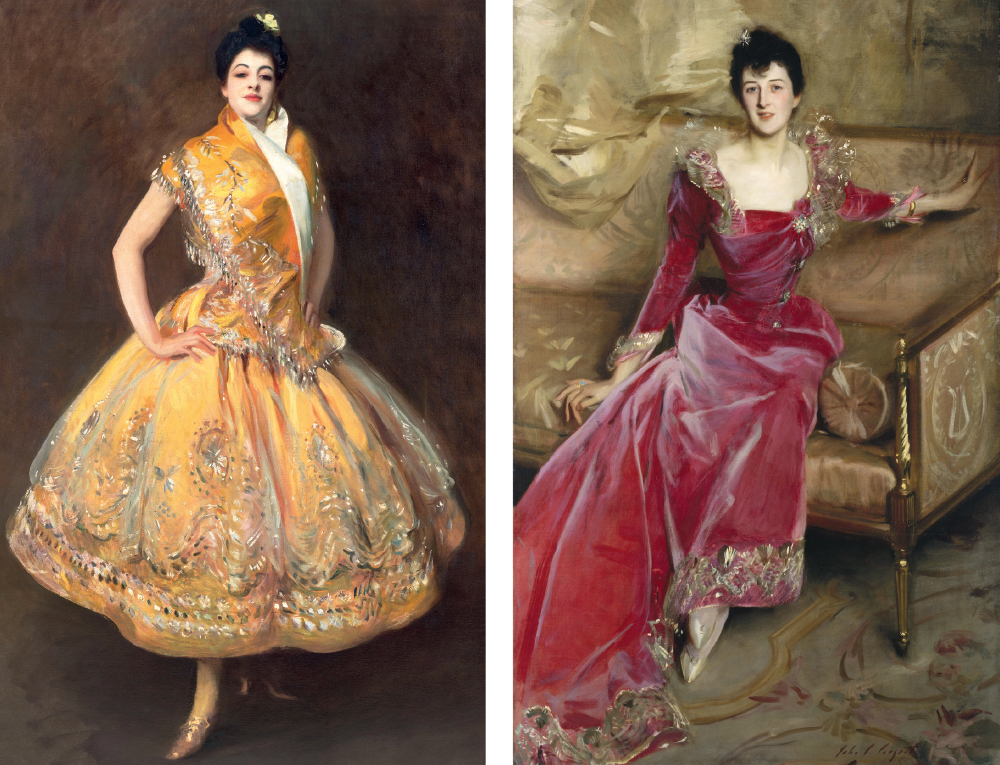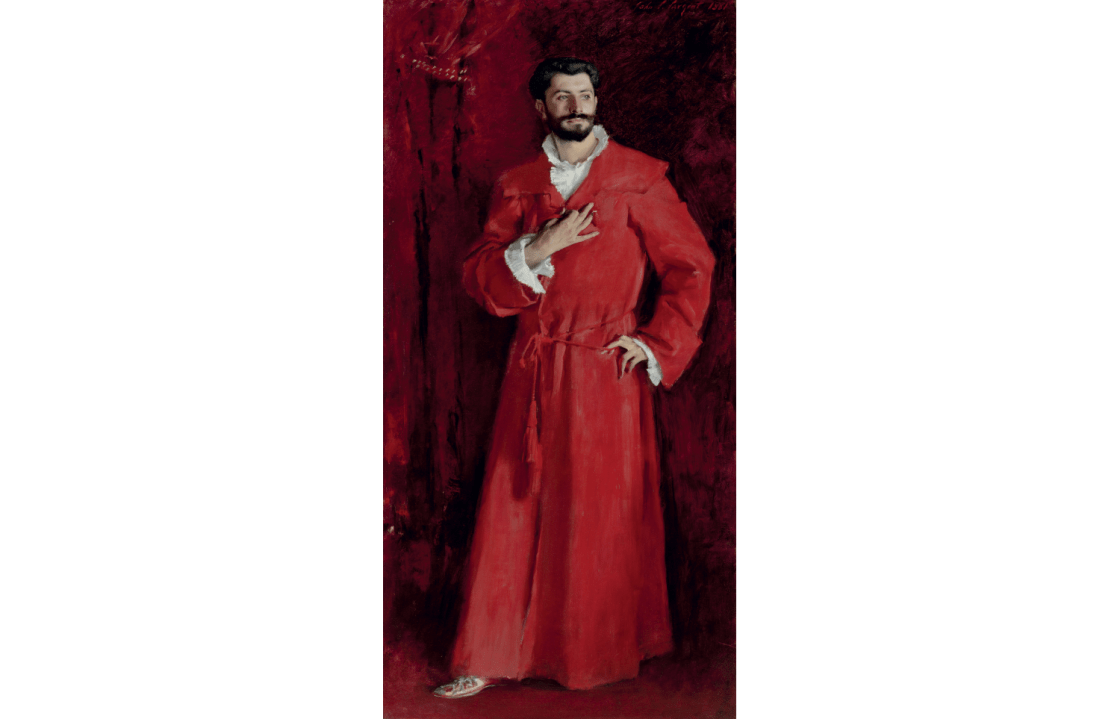Madame Ramon Subercaseaux, the beautiful wife of a Chilean diplomat, was not a Parisienne. So when the 25-year-old John Singer Sargent’s portrait of her in a black and white ensemble straight out of the Renoir playbook won a second-class medal at the 1881 Paris Salon, French pride was wounded. Édouard Pailleron, father of the purebred French children in Sargent’s other Salon submission, kicked up a fuss and had to be placated with another medal. But that was nothing to the scandal that erupted three years later over the American artist’s provocative portrait of femme du monde Virginie Gautreau, salaciously anonymised as ‘Madame X’.
Two years later, he left Paris for London, where a woman could at least dress as a Parisienne and there was no ‘appellation d’origine contrôlée’ about it. Here he ran into a different problem: he was considered too fashion-conscious for a painter. His portraits were ‘nothing but yards and yards of satin from the most expensive shops’, bitched D.H. Lawrence, ‘having some pretty head popped up on the top’.
Sargent would have done a grand job of Penny Mordaunt at Charles’s coronation
Certainly, he had an eye for style. The shy American who dressed like a banker knew how to make a girl look a million dollars, for which his 1,000 guinea fee was a fair price. To be painted by Sargent was to have arrived – but you had to submit to his direction. The special dress you had ordered from Worth might be discarded in favour of an old blue velvet you’d saved for sofa cushions, and he could be just as intractable with men. When W. Graham Robertson moaned about being bundled into a heavy overcoat in the middle of summer, he was informed that ‘the coat is the picture’.
The picture was what mattered: the look and the ligne. By dint of draping, folding, pinning and accessorising with wraps, fascinators, fans and long ropes of pearls, Sargent could turn an ensemble into a thing with zing: he composed with stuffs. The austere black taffeta opera cloak dug out to be displayed at this Tate Britain show is transformed in his painting of ‘Lady Sassoon’ (1907) by exposing its pink lining. But as well as understanding how to manipulate fabric, Sargent knew how to work with the human material he was given. Madame X’s figure would be less of an hourglass had he not tucked away her crinoline bustle. Her outraged mother accused him of having ‘lost’ her daughter in the portrait; he had also lost her a few pounds.
Having spent his formative years knocking around the museums of Europe, Sargent had a bank of grand manners to draw on. He could immortalise Pauline Astor in the style of Gainsborough and Mrs Hugh Hammersley in the style of Reynolds (see below), but he could also riff on the modern masters: his Sybil Sassoon in black is a frothy version of Manet’s paintings of Berthe Morisot – a cappuccino to Manet’s ristretto – and the direct frontal pose of the teenage ‘Miss Elsie Palmer’ (1889-90) recalls Millais’s portraits of children. The fashion might be of the moment, but the art looked timeless.

A good Sargent portrait is a still of a performance; it required the sitter to strike a pose, and not all his paying clients were performers. His most striking portraits, like Gautreau’s, were of invited subjects. Naturally reserved, he warmed to vivacious women like the Wertheimer girls who appear in several of his liveliest paintings. He was comfortable in the company of outsiders like himself: his aristocratic women can look empty-headed, but his Jewish girls have an interior life.
Male subjects offered fewer sartorial diversions. He jumped at the chance of a military uniform, tropical whites or ceremonial robes as worn by Lord Londonderry raising the Sword of State at Edward VII’s coronation. (He would have done a grand job of Penny Mordaunt at Charles III’s.)
His best male portraits are faintly sinister. ‘Lord Ribblesdale’ (1902) in his ‘ratcatcher’ hunting gear with crop and topper looks ready to put you across his knee, and any self-respecting woman would shrink from the spidery fingers of gynaecologist Samuel Pozzi in his scarlet dressing gown, a dead ringer for Vincent Price. Digits are put to work in a Sargent portrait: Graham Robertson’s cocked little finger tells us as much about him as the fluffy white poodle with the pink bow in the shadows at his feet. The artist who guarded the secret of his own sexuality savoured a bit of gender fluidity; in her tailored walking dress, New Woman ‘Mrs Charles Thursby’ (c.1897-8) was compared by a friend to ‘an 18th-century coachman’.
By 1910, sick of what Sickert termed ‘the chiffon and wriggle school of portraiture’, Sargent had stopped accepting commissions and taken to painting exotically costumed figures in the landscape: the procession of ghostly girls in shawls in his painting ‘Cashmere’ (c. 1908) is a strange premonition of his first world war work ‘Gassed’ (1919). In the great outdoors, his painting went to pieces. Accustomed to controlling every detail of an indoor setting, he was too steeped in artifice to deal with nature. This is a dazzling exhibition, but it’s all show.







Comments